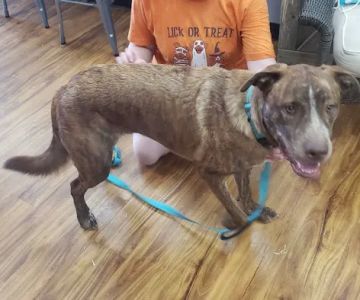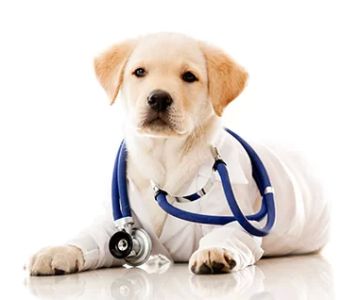How to Prepare Your Pet for Anesthesia
- Understanding Anesthesia for Pets
- Preparation Steps Before Anesthesia
- What to Expect on the Day of the Procedure
- Post-Anesthesia Care for Your Pet
- Where to Get Help for Pet Anesthesia
Understanding Anesthesia for Pets
Anesthesia is often a necessary part of many veterinary procedures, ranging from routine surgeries to dental work. While the idea of your pet undergoing anesthesia may be concerning, it’s important to understand that modern anesthetic techniques are incredibly safe. Veterinary professionals are highly trained to administer anesthesia and monitor your pet throughout the entire process to ensure their safety and comfort.
Before your pet undergoes anesthesia, the veterinarian will conduct a thorough assessment to ensure they are healthy enough for the procedure. This may involve blood work and a physical exam to check for any underlying health conditions that could affect the anesthesia process. It's crucial to discuss any concerns with your vet so they can tailor their approach to your pet’s needs.
Preparation Steps Before Anesthesia
Proper preparation can help ensure your pet has a smooth experience with anesthesia. Here are the steps to follow before the procedure:
1. Fasting
Most pets will need to fast for 12 hours before anesthesia. This helps prevent complications such as vomiting during the procedure. However, be sure to check with your veterinarian for specific instructions regarding food and water. Some pets may require a different fasting schedule depending on their health and age.
2. Pre-Surgery Testing
Depending on your pet’s age and health, your vet may recommend pre-surgery testing such as blood work, X-rays, or an electrocardiogram (ECG) to ensure that they are healthy enough for anesthesia. This step is especially important for older pets or pets with existing health issues, as it allows the vet to adjust their anesthetic plan accordingly.
3. Medications
Discuss any medications your pet is currently taking with your vet. Some medications, such as pain relievers or blood thinners, may need to be adjusted before anesthesia to avoid complications. In some cases, your vet may prescribe pre-anesthetic medications to help calm your pet before the procedure.
4. Behavioral Considerations
It’s helpful to assess how your pet reacts to stress or new environments. If your pet is particularly anxious, your vet may recommend additional strategies to help them stay calm on the day of the procedure. Some animals may benefit from a mild sedative before being transported to the clinic to reduce anxiety.
What to Expect on the Day of the Procedure
The day of your pet’s procedure can be emotional for both you and your pet. Here’s what you can expect:
1. Arriving at the Clinic
When you arrive at the veterinary clinic, your pet will be checked in and undergo a final physical exam. Your vet will review your pet’s medical history and ensure they are ready for anesthesia. You’ll likely be asked to leave your pet with the clinic staff to allow them to prepare for the procedure.
2. Anesthesia Induction
Your pet will be administered anesthesia via injection or gas to induce a calm, unconscious state. The vet will monitor vital signs such as heart rate, blood pressure, and oxygen levels throughout the process to ensure everything is running smoothly. The anesthesia will be tailored to your pet’s specific needs to minimize risk and maximize comfort.
3. Monitoring During Surgery
During the procedure, your pet will be closely monitored by veterinary technicians and anesthesiologists to ensure they are stable throughout. Many veterinary clinics use advanced monitoring equipment to keep track of your pet’s heart rate, respiratory rate, and other key health indicators.
Post-Anesthesia Care for Your Pet
After the procedure, your pet will be moved to a recovery area, where they will be monitored as they wake up from anesthesia. It’s common for pets to be groggy or disoriented when they first wake up, so it's important to keep them calm and comfortable during this time.
1. Reintroduction to Food and Water
Your pet may not be able to eat or drink immediately after anesthesia. Once they are fully awake, your veterinarian will give you guidelines for reintroducing food and water. It’s important to follow these instructions carefully to avoid any digestive issues.
2. Activity Restrictions
Depending on the type of procedure, your pet may need to rest for a few days after anesthesia. Avoid strenuous activity, such as running or jumping, until your vet gives the go-ahead. Following these recommendations will help ensure your pet heals properly and avoids complications.
3. Signs to Watch For
After anesthesia, it’s important to watch for any signs of complications, such as excessive lethargy, difficulty breathing, or vomiting. If you notice anything unusual, contact your vet immediately. Most pets recover quickly, but early intervention can prevent further issues.
Where to Get Help for Pet Anesthesia
If you’re preparing your pet for anesthesia and have questions or concerns, it’s always a good idea to consult with your veterinarian. They will provide you with all the necessary information and ensure your pet’s safety. If you're looking for a trusted veterinary clinic to help with your pet's procedure, visit Hidden Brook Veterinary, where our team of professionals will guide you every step of the way, ensuring your pet’s comfort and well-being.











